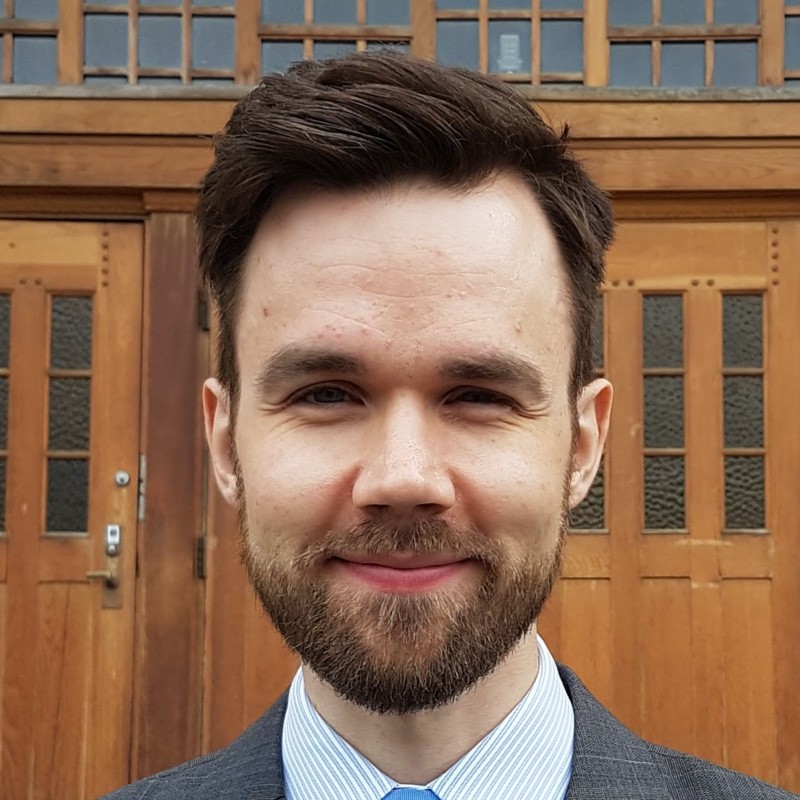Navigation of unmanned vehicles using Bluetooth
This page describes multiple projects related to navigation of autonomous vehicles using Bluetooth, in a project called PARNAV.Collaboration between multiple students on related projects is highly encouraged. See also this link for other projects within PARNAV offered by Assoc. Prof Torleiv H. Bryne.
Background
Bluetooth is a well-known wireless technology standard that enables communication between many of our smart devices. However, recent and upcoming additions to the Bluetooth standard enable new use cases; navigation, using range and/or directional information. In version 5.1 of the Bluetooth standard, the constant tone exchange (CTE, a constant sine wave) was added to the end of the Bluetooth package. By measuring the phase of this sine wave using multiple antennas in different positions, the direction to the signal source can be estimated.
The range between the transmitter and the receiver can be found in at least three different ways: 1. Using signal strength (RSSI) is typically the least accurate, 2. Measuring the time it took for the data to travel (time of flight) improves this somewhat, to an accuracy of 2-4 meters. 3. The most accurate method, multi-carrier phase differencing, considers the phase, which also is a function of the distance between the sender and transmitter, enabling accuracies down to 30-50 cm. This was introduced in Bluetooth version 6.0, from August 2024.
While the focus of the industry and the literature seem to be on indoor use of Bluetooth, the underlying technology also has merit in outdoor navigation of unmanned vehicles, like landing of drones and docking of autonomous ships, see the below videos:
| Net landing | Ship docking |
|---|---|
 |
 |
Both videos represent scenarios where it is critical to know the exact position of the vehicle, so relying on a single position sensor, like GPS, makes the system vulnerable and error-prone.
Scope
There are many possible areas of focus within this project, that can be adapted to the interests and competence of the candidate. This includes, but is not limited to
- How can ranging be combined with directional information from an antenna array? Using both range and directional information it is possible to determine the full 3D position of the transmitter using a single receiving antenna array, but there are many unknowns, and they are likely to vary in different environments and for vehicles with different dynamics:
- how often should we measure range and how often should we measure direction? (Ranging and direction are mutually exclusive, as they share the same physical radio)
- accuracy of phase-based range estimates improves when using more frequencies (in a stationary case), but that requires more time. More time means that the vehicle has moved longer during the measurement, which decrease the measurement accuracy. What is the optimal tradeoff?
- How can Bluetooth range and direction measurements be combined with other measurements to estimate the position, velocity and attitude of autonomous vehicles? One option could be to use a Kalman filter to fuse the information from inertial sensors (accelerometer and gyroscope) with multiple range measurements and other sensors common in drone payloads (barometer/altimeter, GPS). Some ideas:
- improve measurements by using velocity feedback from the KF to compensate for Doppler effects?
- use feedback from previous estimates to initiate the search for the new measurement. How to ensure stability?
- use of neural networks to detect anomalies in the power spectrum
- comparison of various direction finding algorithms on real Bluetooth data from a drone
- In a search and rescue situation, two drones equiped with Bluetooth arrays are trying to locate a missing person through the Bluetooth signal from his phone. What is the best way to do this? How should the drones move?
- consider both drones as one big array (to increase the aperture and thus the accuracy)?
- range and direction information from both drones, centrally processed?
- de-centralized processing?
- AutoStore, a world-leading company in warehouse robots, is a partner in the project. They are interested in finding the position of their robots, particularily those that have broken down/derailed. Some related challenges:
- how to exploit information about the grid/map to improve navigation accuracy
- what is the optimal placement of arrays/beacons along the grid to maximize navigation accuracy and minimize cost? Can we save cost/equipment by positioning idle robots to improve accuracy, or actively position robots to find the one that has derailed?
- relative motion measurement (we moved 1mm) are very accurate in BT ranging, but absolute suffers from bias. Solve with KF? low hanging fruit
Please indicate what aspects of the project that caught your attention.
Regardless of the focus, experimental validation will be important, where flight testing using one of our drones is a natural step on the way.
Proposed tasks
The tasks will vary based on the focus of the project, as decided by the student (you) and the supervisor (me), but the below steps are common:
- Perform a literature study on the state of the art within radio-based navigation
- Familiarize with the capabilities and limitations of relevant, existing development kits and software libraries for Bluetooth range and/or direction measurements
- Extend/adapt solutions from the literature and/or
- Discuss the results with a critical eye, and conclude the work in a written report
The work will continue in a master thesis for the spring semester, and could possibly lead to a job at Nordic Semiconductor.
Prerequisites
The project lies in the intersection of estimation/navigation, embedded computers and signal processing. No candidate is expected to be an expert in all these domains, but the background and interest of the candidate will help determine the focus of the project.
Contact
Contact supervisor Kristoffer Gryte. Other people involved in the project, depending on the chosen focus, are
- Torleiv H. Bryne (Assoc. Prof. NTNU ITK)
- Kimmo Kansanen (Prof. NTNU IES)
- Carsten Wulff (Assoc. Prof. NTNU IES/Wireless Group Manager Nordic Semiconductor)
